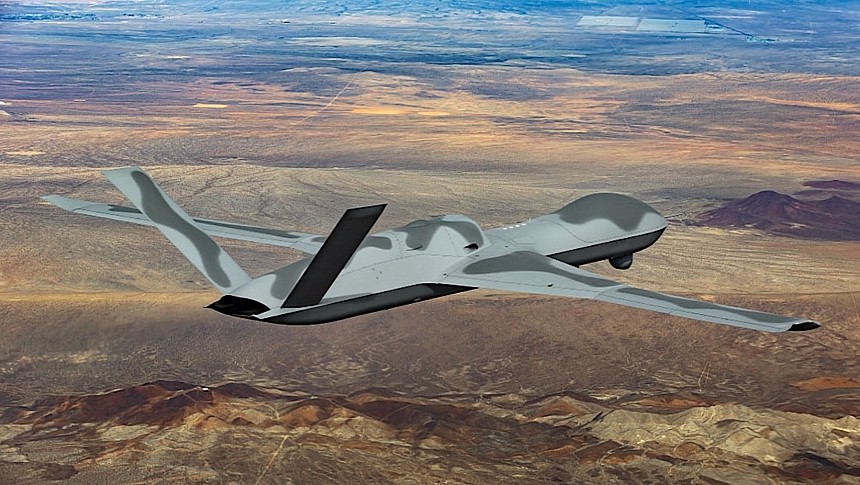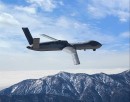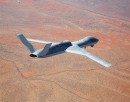There is little doubt that our world is heading for a future when even weapon systems will be autonomous to some degree. Sure, they'll probably not call the shots (or pull the trigger), but they will be capable of performing, on their own, things we can barely imagine now. As recently demonstrated by an MQ-20 Avenger.
The drone is a product of General Atomics, and it has been around since the 2000s... It's not yet ready for active duty yet, so you won't see it flying overhead in active missions, but it is advanced enough to be used as a test platform for other technologies.
In standard configuration, the Avenger can fly for up to 18 hours, reaching speeds of 400 mph (650 kph) and altitudes of up to 50,000 feet (15,000 meters). Its main mission is combat, as it carries an assortment of bombs and missiles attached to its six external hardpoints or inside the weapons bay that can hold up to 3,500 pounds (1,600 kg) of the stuff.
To be able to reach its target and get all the relevant info the drone relies on a ground control station and a communication network. And it's this side of the aircraft that was recently put to the test during a mission conducted back in November last year, but only now made public by General Atomics.
An Avenger was used during the test, which took place at the General Atomics-operated Desert Horizon Flight Operations facility in El Mirage, California, to prove its open standards-based autonomy capability, by employing third-party tech it never used before.
More to the point the drone was equipped with a software-defined radio supplied by L3Harris. This one worked in conjunction with two other similar systems, installed at the ground control station.
The point of the test was to show how a new comms system being developed by the U.S., called Waveform X, can be used to conduct missions. More importantly, however, the test demonstrated a very important point: how one can rapidly plug and play tech and hardware devised for either the U.S. Navy or the U.S. Air Force (USAF) and how these systems can work together on a single platform.
We're not told the exact profile of the test, but we do know it consisted of collaborative combat missions, including find, fix, track, target, and engage.
There are no details on what (if anything) will come of the test in the real world, but General Atomics says it will continue to offer the Avenger drone as a test bed for such trials.
What that means is you'll have to brace for more new and potentially weird tech being put to the test for the sake of military development.
In standard configuration, the Avenger can fly for up to 18 hours, reaching speeds of 400 mph (650 kph) and altitudes of up to 50,000 feet (15,000 meters). Its main mission is combat, as it carries an assortment of bombs and missiles attached to its six external hardpoints or inside the weapons bay that can hold up to 3,500 pounds (1,600 kg) of the stuff.
To be able to reach its target and get all the relevant info the drone relies on a ground control station and a communication network. And it's this side of the aircraft that was recently put to the test during a mission conducted back in November last year, but only now made public by General Atomics.
An Avenger was used during the test, which took place at the General Atomics-operated Desert Horizon Flight Operations facility in El Mirage, California, to prove its open standards-based autonomy capability, by employing third-party tech it never used before.
More to the point the drone was equipped with a software-defined radio supplied by L3Harris. This one worked in conjunction with two other similar systems, installed at the ground control station.
The point of the test was to show how a new comms system being developed by the U.S., called Waveform X, can be used to conduct missions. More importantly, however, the test demonstrated a very important point: how one can rapidly plug and play tech and hardware devised for either the U.S. Navy or the U.S. Air Force (USAF) and how these systems can work together on a single platform.
We're not told the exact profile of the test, but we do know it consisted of collaborative combat missions, including find, fix, track, target, and engage.
There are no details on what (if anything) will come of the test in the real world, but General Atomics says it will continue to offer the Avenger drone as a test bed for such trials.
What that means is you'll have to brace for more new and potentially weird tech being put to the test for the sake of military development.








